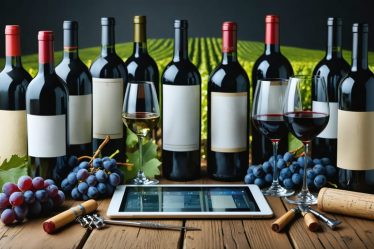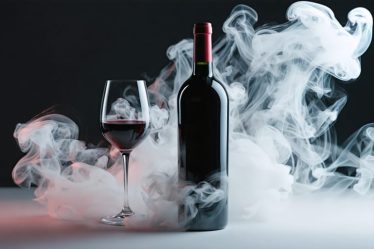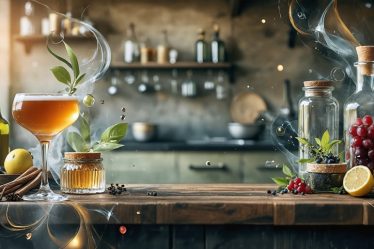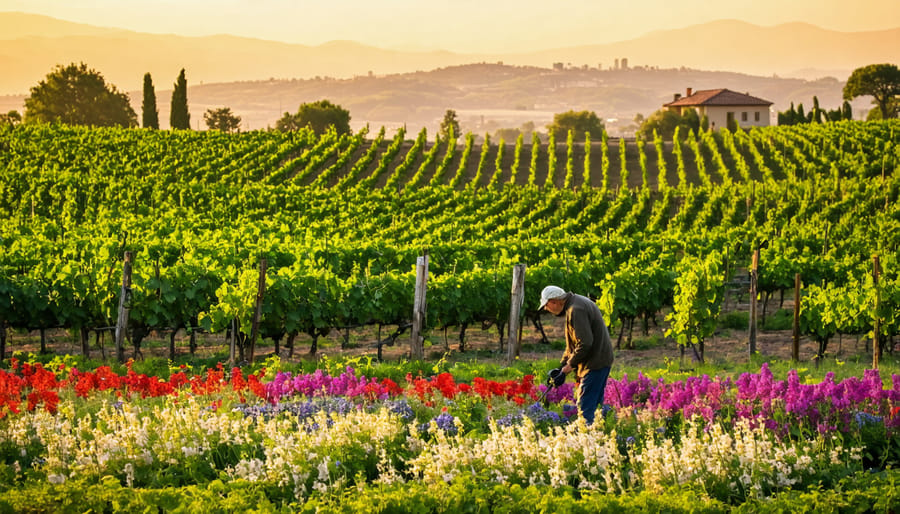
Imagine sipping a glass of wine that not only delights your palate but also helps preserve our planet for future generations. Sustainable winemaking is revolutionizing the industry, transforming how we produce, consume, and think about our favorite vintages. From the sun-drenched vineyards of California to the historic estates of France, forward-thinking vintners are proving that environmental stewardship and exceptional wine quality go hand in hand.
Gone are the days when “eco-friendly” meant compromising on taste. Today’s sustainable wines showcase the beautiful harmony between traditional craftsmanship and innovative environmental practices. Whether it’s using solar power to run operations, implementing water conservation techniques, or maintaining biodiversity through organic farming, these mindful methods are creating wines that tell a story of responsibility and respect for the earth.
As wine enthusiasts increasingly seek out bottles that align with their values, understanding sustainable winemaking has never been more relevant. These wines don’t just offer a toast to good taste – they represent a commitment to preserving the delicate ecosystems that make great wine possible. Let’s explore how this movement is shaping the future of wine, one sustainable sip at a time.
What Makes Wine Actually Sustainable?
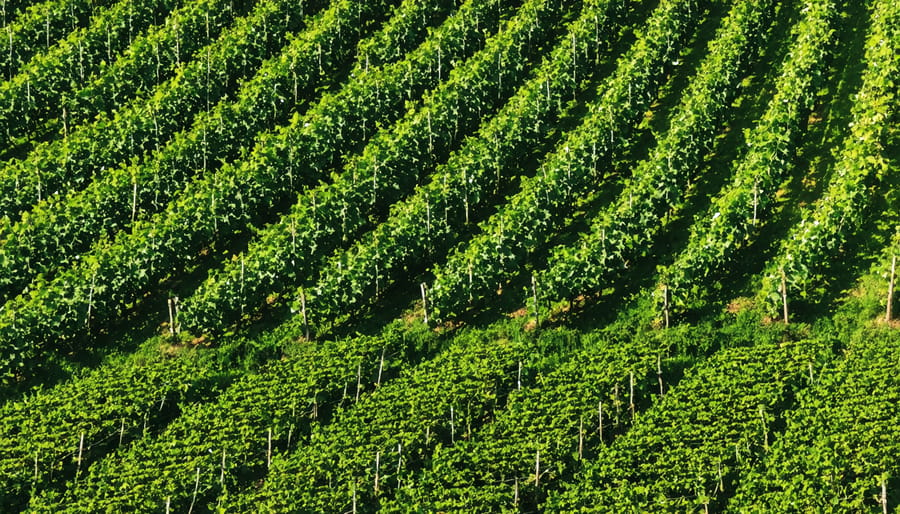
From Soil to Sip: The Organic Connection
Picture walking through a vineyard where butterflies dance between the vines and wildflowers peek through the soil – this is the essence of organic winemaking. Unlike conventional vineyards, organic vintners embrace nature’s rhythm, working in harmony with the environment rather than against it.
What makes organic vineyards special is their commitment to natural farming practices. Instead of synthetic pesticides, you’ll find beneficial insects like ladybugs controlling pests naturally. Cover crops – think clover and mustard plants – grow between vine rows, enriching the soil and providing a home for helpful creatures. It’s like creating a tiny ecosystem where every plant and insect plays its part.
The soil is truly the star of the show. Organic vintners treat it like a living entity, nourishing it with natural compost and organic matter. This creates healthier vines that produce grapes with more intense flavors and a true expression of their terroir – that special combination of soil, climate, and growing conditions that makes each wine unique.
But it’s not just about what organic farming excludes; it’s about fostering life. Many organic vintners report seeing the return of native birds, bees, and other wildlife to their vineyards – nature’s seal of approval for their sustainable practices.
Water-Wise Wineries
In the sun-drenched vineyards of today’s most forward-thinking wineries, water conservation has become just as crucial as grape selection. As someone who’s visited numerous sustainable vineyards, I’m always amazed by the innovative ways winemakers are doing more with less water.
Picture this: sophisticated drip irrigation systems delivering precise amounts of water directly to vine roots, eliminating waste and ensuring every drop counts. Many wineries are now collecting rainwater in underground cisterns, while others have mastered the art of dry farming – a traditional technique that relies primarily on natural rainfall.
One of my favorite discoveries was learning about soil moisture sensors. These smart devices help vineyard managers monitor exactly when and where water is needed, much like having a high-tech gardening assistant. Some wineries have even started recycling their wastewater from the production process, treating it naturally through constructed wetlands before using it to irrigate their cover crops.
The best part? These water-wise practices often lead to more concentrated, flavorful grapes. It turns out that when vines have to work a little harder for water, they produce more complex and intense fruit – a wonderful example of sustainability actually enhancing wine quality.
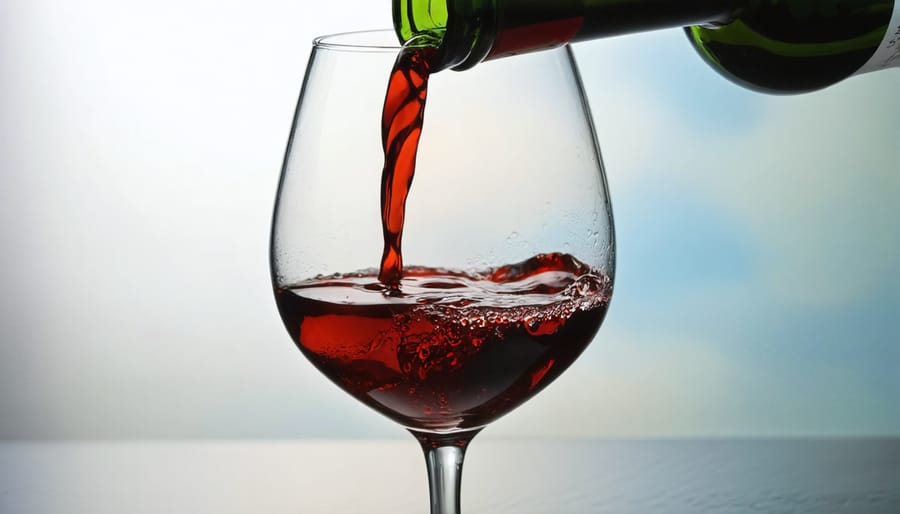
Your Taste Buds Will Thank You
The Terroir Truth
When it comes to sustainable winemaking, there’s a beautiful connection between earth-friendly practices and the wine in your glass. As someone who’s enhanced my own wine tasting experience over the years, I’ve discovered that sustainable vineyards often produce wines with more distinct and authentic flavors.
Think of terroir as nature’s signature – it’s the unique combination of soil, climate, and landscape that gives wine its character. Sustainable winemaking practices work to protect and enhance these natural elements. When vintners avoid harsh chemicals and embrace organic farming methods, they’re not just helping the environment; they’re allowing the true essence of the grape to shine through.
I’ve noticed that wines from sustainable vineyards often have a purity of flavor that’s hard to match. This comes from healthier soil teeming with beneficial microorganisms, which help grapevines access more nutrients and develop deeper roots. The result? Grapes that perfectly express their natural environment.
Many sustainable winemakers also practice dry farming (minimal irrigation), which forces vines to work harder and produce more concentrated flavors. While this might mean smaller yields, it often results in more complex and interesting wines. It’s amazing how doing what’s right for the environment can lead to such delicious results in our glasses!
Clean Grapes, Better Wine
Have you ever noticed how a fresh, perfectly ripe grape bursts with natural sweetness? That same pure, unadulterated flavor is what sustainable winemakers strive to capture in every bottle. When vineyards skip harmful pesticides and synthetic chemicals, they’re not just doing the environment a favor – they’re cultivating grapes that truly express their natural character.
I recently visited a sustainable vineyard in Sonoma, where the vintner shared how chemical-free farming has transformed their wines. “The soil is alive,” she explained, running her hands through the rich earth. “When you nurture the ecosystem naturally, the vines produce grapes with more complex flavors.” These natural farming methods are proving to be game-changers among the many wine quality factors that influence the final product.
The absence of synthetic pesticides allows the grapes to develop their own natural defense mechanisms, which actually enhance their flavor compounds. Think of it like this: just as we become stronger when we face challenges naturally, grapes develop more character when they adapt to their environment without artificial interference.
The result? Wines that offer pure expressions of their terroir – that magical combination of soil, climate, and farming practices that makes each bottle unique. Many wine enthusiasts report brighter, cleaner flavors in sustainably produced wines, noting that they can actually taste the difference that chemical-free farming makes.
Shopping Smart: Finding True Sustainable Wines
Labels That Matter
Have you ever stood in the wine aisle, trying to decipher those eco-friendly labels? You’re not alone! While many wine certification programs exist, some key labels truly matter when it comes to sustainable wine.
The most recognized certification is “USDA Organic,” which guarantees the wine is made from organically grown grapes without synthetic fertilizers or pesticides. Look for “Certified Sustainable” labels from organizations like SIP (Sustainability in Practice) or LIVE (Low Input Viticulture and Enology) – these ensure the winery follows comprehensive environmental practices, from water conservation to worker welfare.
I remember chatting with a California winemaker who explained that Biodynamic certification (look for the Demeter label) goes beyond organic, treating the vineyard as a complete ecosystem. It’s like organic wine-making with a spiritual twist!
Some regions have their own sustainability certifications. New Zealand, for instance, proudly displays the “Sustainable Winegrowing NZ” seal, while California features the “California Certified Sustainable” logo.
Here’s a pro tip: don’t dismiss wines without certification labels. Some small, family-owned vineyards practice sustainable methods but haven’t pursued formal certification due to costs. The key is to ask questions and build relationships with your local wine shops – they often know the stories behind each bottle.
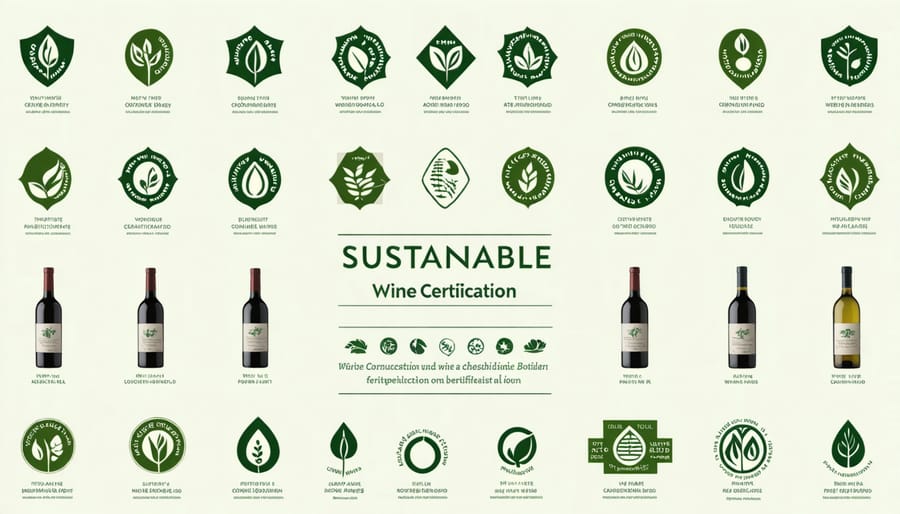
My Favorite Sustainable Wines Under $30
Let me share some of my favorite sustainable wines that won’t break the bank! I’ve spent years exploring eco-friendly options, and these gems consistently deliver both quality and value.
Bonterra Organic Vineyards Chardonnay ($15) is my go-to white wine for casual gatherings. With its crisp apple notes and subtle oak, it’s perfect for those new to sustainable wines. For red wine lovers, the Benziger Family Winery Merlot ($18) offers beautiful plum and cherry flavors while supporting biodiversity through their certified sustainable practices.
The New Age White Blend ($12) from Argentina surprises everyone with its light, refreshing character and sustainable farming methods. It’s become my summer favorite, especially with its versatile wine pairing suggestions.
Don’t overlook the Cono Sur Organic Pinot Noir ($14) from Chile – it’s a fantastic example of how sustainable practices can enhance wine quality. The bright berry flavors and silky texture make it an excellent choice for dinner parties.
For special occasions, I recommend the Medlock Ames Bell Mountain Sauvignon Blanc ($28). While it’s on the higher end of our budget, this solar-powered winery creates an exceptional wine that proves sustainable choices can be luxurious too.
Remember, availability and prices may vary by location, but these wines demonstrate that supporting environmental consciousness doesn’t mean compromising on taste or affordability.
As we raise our glasses to the future of winemaking, it’s clear that sustainable practices are more than just a trend – they’re a commitment to both our planet and our palates. By choosing sustainable wines, we’re not only treating ourselves to unique, terroir-driven flavors but also supporting winemakers who are dedicated to preserving our earth for future generations.
I’ve personally noticed how conversations around wine have evolved at my dinner parties. More friends are asking about a wine’s environmental impact alongside questions about its taste profile. It’s heartening to see how sustainable wines have become a gateway to deeper discussions about environmental responsibility while bringing people together.
The beauty of sustainable winemaking lies in its ripple effect. Every time we choose a sustainable wine, we’re voting for cleaner soil, healthier ecosystems, and better working conditions for vineyard workers. Plus, these wines often tell fascinating stories of innovation and tradition working hand in hand.
Remember, sustainable wine isn’t just good for the environment – it’s an investment in quality. These wines are crafted with extraordinary care and attention, often resulting in bottles that beautifully express their unique terroir. So the next time you’re selecting a wine, consider making it a sustainable choice. Your taste buds, the planet, and future wine lovers will thank you for it.

